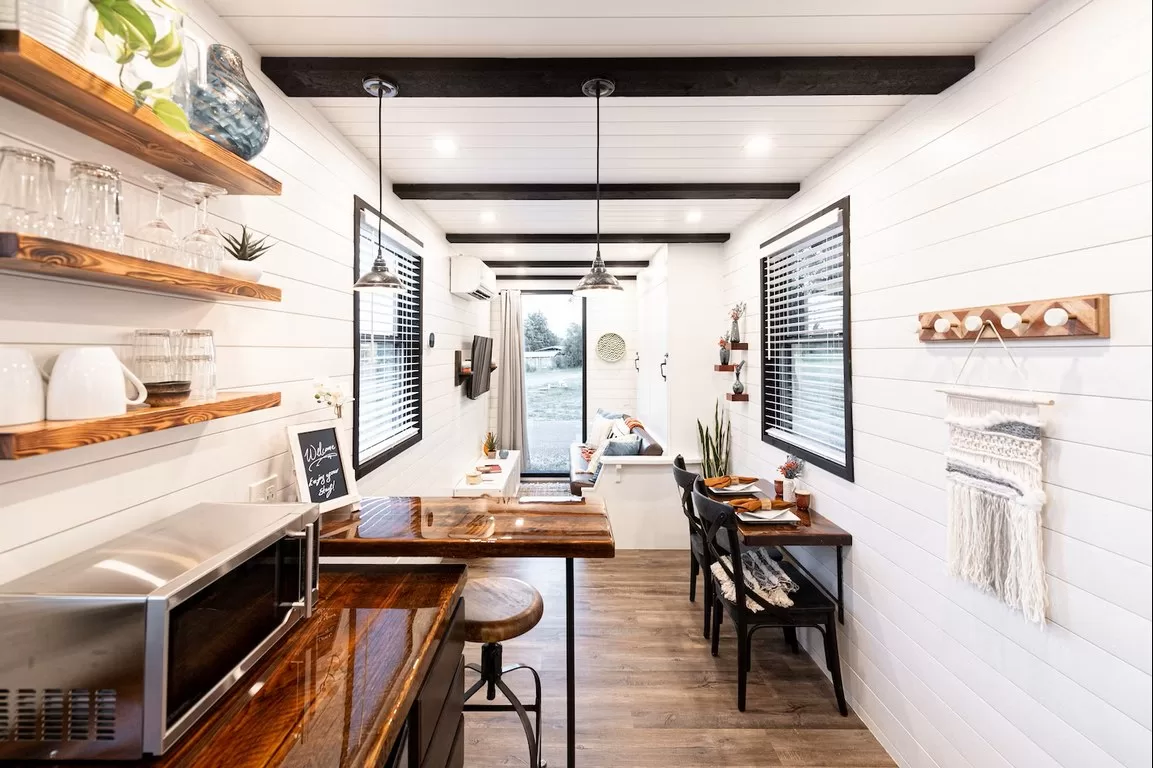A few decades ago, it was not uncommon that someone working a 9-5 job was able to afford a good quality house, pay for their children’s college education, and put away a nice little nest egg for the latter years of their lives.
In the last few years, however, these instances have become harder and harder to come by.
According to reports, millennial house ownership rates only very recently breached the 50% mark.
If we take a look at Gen X house ownership trends, however, their ownership stood at 58% when they were the same age.

The solution? A multitude of innovations in housing trends, with the most peculiar and potentially most popular iteration being the tiny home phenomenon.
While the tiny house phenomenon began with a number of portable housing options, the market has since expanded.
Now, you can even get a coastal house in a tiny home format, complete with coastal home designs.
The tiny house phenomenon is a recent house-building trend that involves people opting for small-scale but hyper-optimized living spaces.
In a fraction of the footprint of a traditional house, tiny homes aim to offer their inhabitants equal utility and often a taste of luxury.
The core of the tiny house philosophy lies in prioritizing what is essential.
While it appears to be a downsizing exercise, tiny homes aim to offer just as much functionality as their counterparts.
Oftentimes, rooms in the house do not serve a singular purpose, with one room being used for two or more activities (A living room that turns into a bedroom with a single pull-out bed, for instance).
There also exist several sub-categories under the umbrella of a ‘tiny house.’ Some designers opt to build permanent houses with a smaller footprint, while others aim to make their tiny homes portable so they can move around (though this comes with its fair share of complications).
Tiny homes can be found in the form of a portable lodge, a coastal house, and other such iterations.
While millennial homeownership has seen an uptake, millennials who are renting continue to get a raw deal as they are constantly being squeezed out of the market due to a sharp increase in rent prices.
Read Also :
One can argue that the groundwork for this phenomenon was laid down by the 2008 recession that saw millennials who were just kick-starting their careers unable to meet the costs of living.
However, more than a decade later, millennials are still finding it hard to keep up, causing them to look for alternate accommodation, such as tiny homes.
The average house price in the U.S. just broke the $400,000 mark.
With wages being unable to scale at the same rate, tiny homes are becoming the go-to choice for many today.
While the tiny house trend might be picking up, it might not be everyone’s cup of tea.
There are a number of benefits to a tiny home.
With these, come a few drawbacks, too.
A minimal footprint and efficient living are a plus in many people’s books.
Ideally, check to see if a tiny home is, in fact, ticking the right boxes for you before you head out to buy one.
We have discussed how rising house prices and wage rates that cannot keep up have caused people to look for alternatives.
As it turns out, however, a tiny home is not a particularly ‘cheaper’ alternative.
Due to the requirement of very efficient yet minimal spaces, the per-square-foot cost of construction for a tiny home can often exceed that of a traditional house.
When the luxury factor is accounted for, like a tiny coastal house, the cost can further increase.
An argument in favor of tiny houses is that due to the increased efficiency, the costs can be made up in the long run due to a reduction in fixed costs.
Tiny homes have partly emerged as a result of rising rent and housing prices.
However, you can also rent a tiny home. If you find that traditional apartments are too expensive or that you are not getting your money’s worth, renting a tiny home might be an option worth considering.
Tiny Homes also reduces the cost of the environment.
With a focus on integrating tiny homes with their surroundings, they tend to be more considerate of the environment.
SDC House Plans points out that choosing the right building materials is essential to building a good home, and this applies to a tiny home as well.
There are also a few things you should consider before you head out in search of house plans for a tiny home.
One of the USPs of tiny homes is that they are portable.
If you are tired of one location, you can simply pack up your things into your house and venture out to a different location.
As it turns out, there are regulations you will have to follow.
Many cities do not allow tiny homes to be parked in a residential yard.
If you want to set up your tiny home as a permanent residence, on the other hand, you will have to seek a slew of permits first.
Getting a tiny home also means you give up on certain facilities, such as being part of a community.
Unlike traditional houses located in common neighborhoods, each tiny home stands on its own, untethered from the people around.
The questions raised about a tiny home’s cost and practicality do not mean tiny homes are a good option.
Rather, it is for you to assess whether a tiny home will suit all your living needs.
While some might enjoy the minimal living lifestyle, others might be able to let go of traditional housing.
For those looking for the best of both worlds, there now exists a slew of luxury tiny homes as well.
Be it coastal home plans or a tiny home for your holiday requirement, the possibilities are virtually endless.